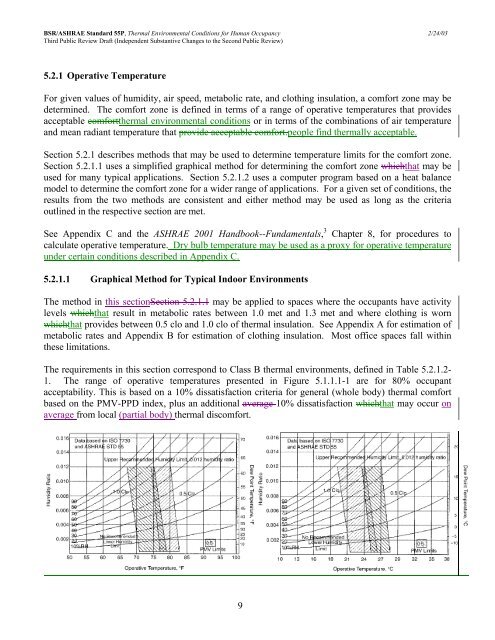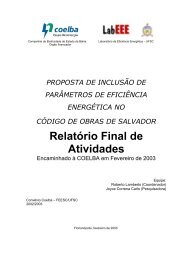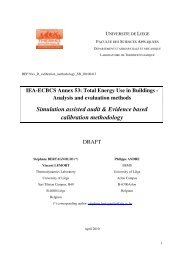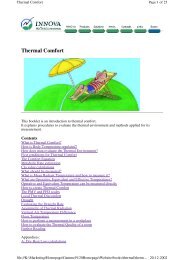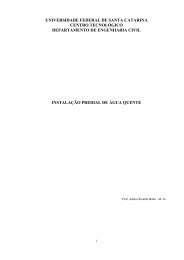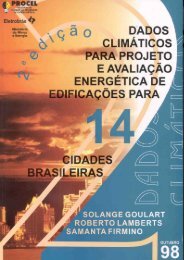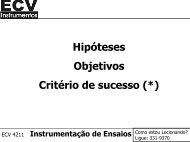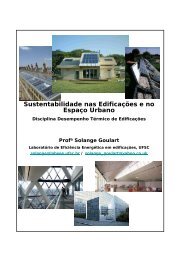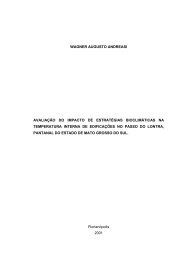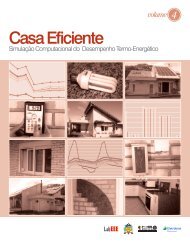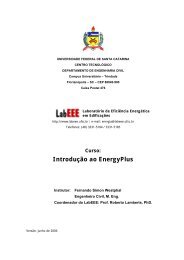ASHRAE STANDARD - 55R
ASHRAE STANDARD - 55R
ASHRAE STANDARD - 55R
Create successful ePaper yourself
Turn your PDF publications into a flip-book with our unique Google optimized e-Paper software.
BSR/<strong>ASHRAE</strong> Standard 55P, Thermal Environmental Conditions for Human Occupancy 2/24/03<br />
Third Public Review Draft (Independent Substantive Changes to the Second Public Review)<br />
5.2.1 Operative Temperature<br />
For given values of humidity, air speed, metabolic rate, and clothing insulation, a comfort zone may be<br />
determined. The comfort zone is defined in terms of a range of operative temperatures that provides<br />
acceptable comfortthermal environmental conditions or in terms of the combinations of air temperature<br />
and mean radiant temperature that provide acceptable comfort.people find thermally acceptable.<br />
Section 5.2.1 describes methods that may be used to determine temperature limits for the comfort zone.<br />
Section 5.2.1.1 uses a simplified graphical method for determining the comfort zone whichthat may be<br />
used for many typical applications. Section 5.2.1.2 uses a computer program based on a heat balance<br />
model to determine the comfort zone for a wider range of applications. For a given set of conditions, the<br />
results from the two methods are consistent and either method may be used as long as the criteria<br />
outlined in the respective section are met.<br />
See Appendix C and the <strong>ASHRAE</strong> 2001 Handbook--Fundamentals, 3 Chapter 8, for procedures to<br />
calculate operative temperature. Dry bulb temperature may be used as a proxy for operative temperature<br />
under certain conditions described in Appendix C.<br />
5.2.1.1 Graphical Method for Typical Indoor Environments<br />
The method in this sectionSection 5.2.1.1 may be applied to spaces where the occupants have activity<br />
levels whichthat result in metabolic rates between 1.0 met and 1.3 met and where clothing is worn<br />
whichthat provides between 0.5 clo and 1.0 clo of thermal insulation. See Appendix A for estimation of<br />
metabolic rates and Appendix B for estimation of clothing insulation. Most office spaces fall within<br />
these limitations.<br />
The requirements in this section correspond to Class B thermal environments, defined in Table 5.2.1.2-<br />
1. The range of operative temperatures presented in Figure 5.1.1.1-1 are for 80% occupant<br />
acceptability. This is based on a 10% dissatisfaction criteria for general (whole body) thermal comfort<br />
based on the PMV-PPD index, plus an additional average 10% dissatisfaction whichthat may occur on<br />
average from local (partial body) thermal discomfort.<br />
9


